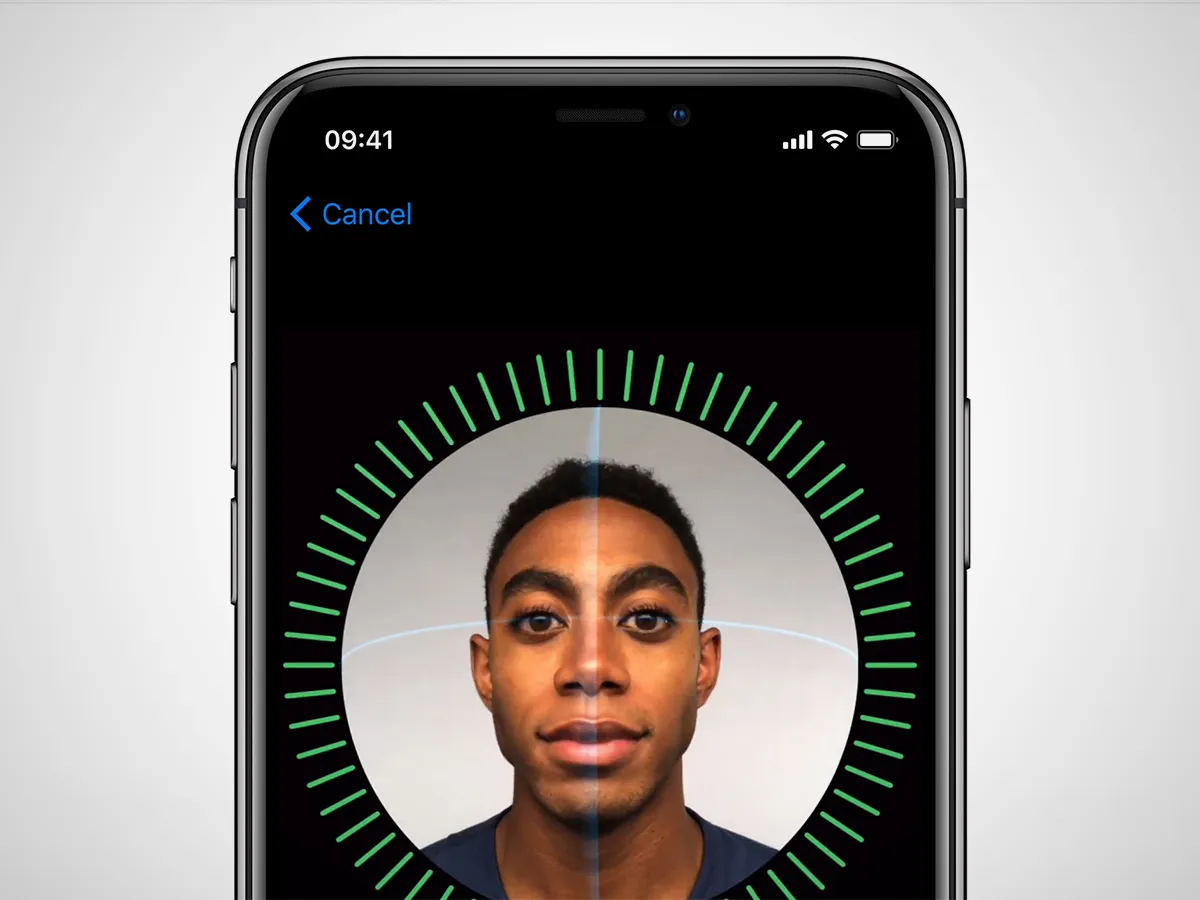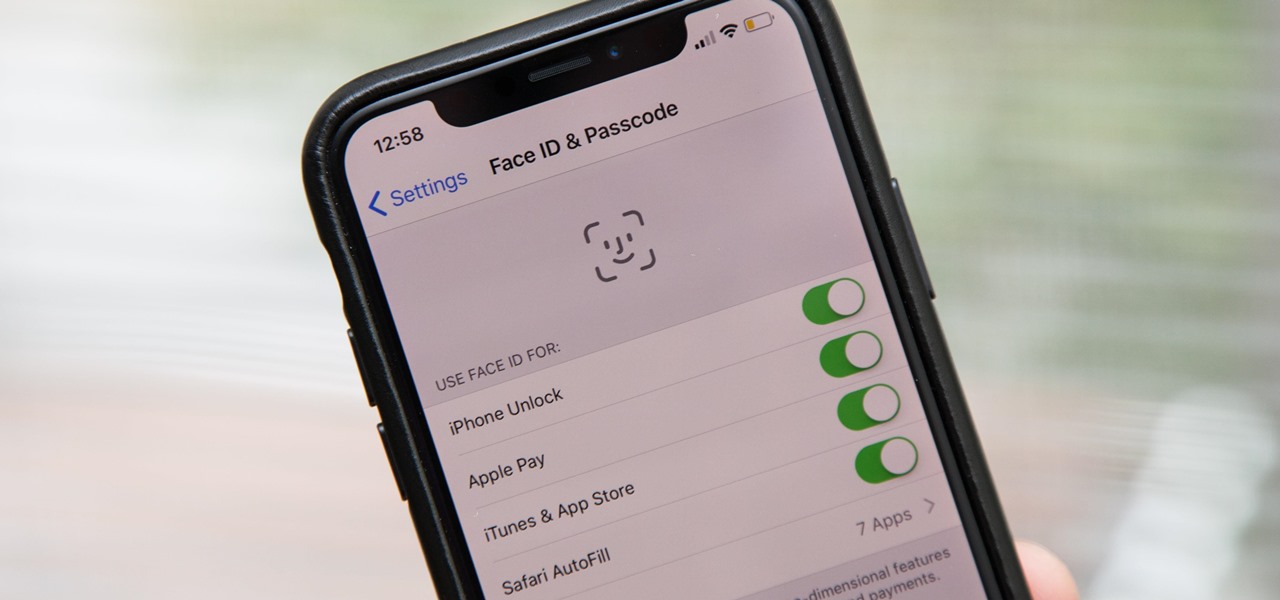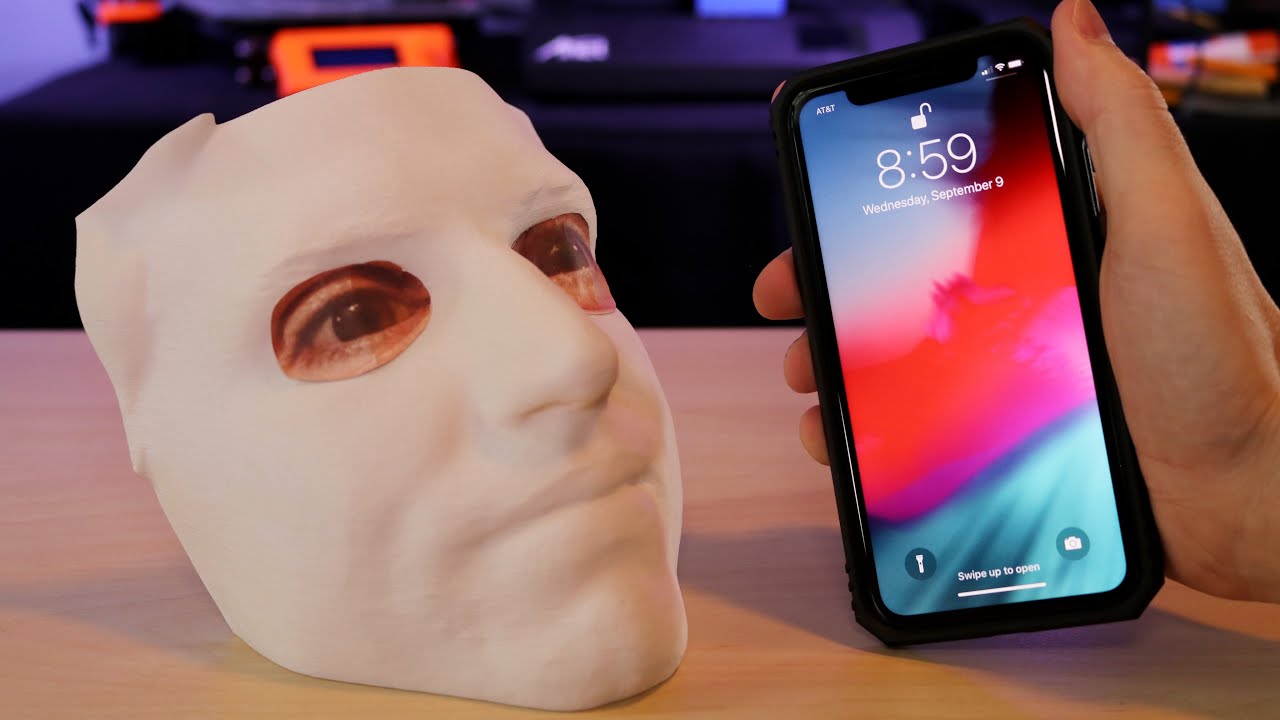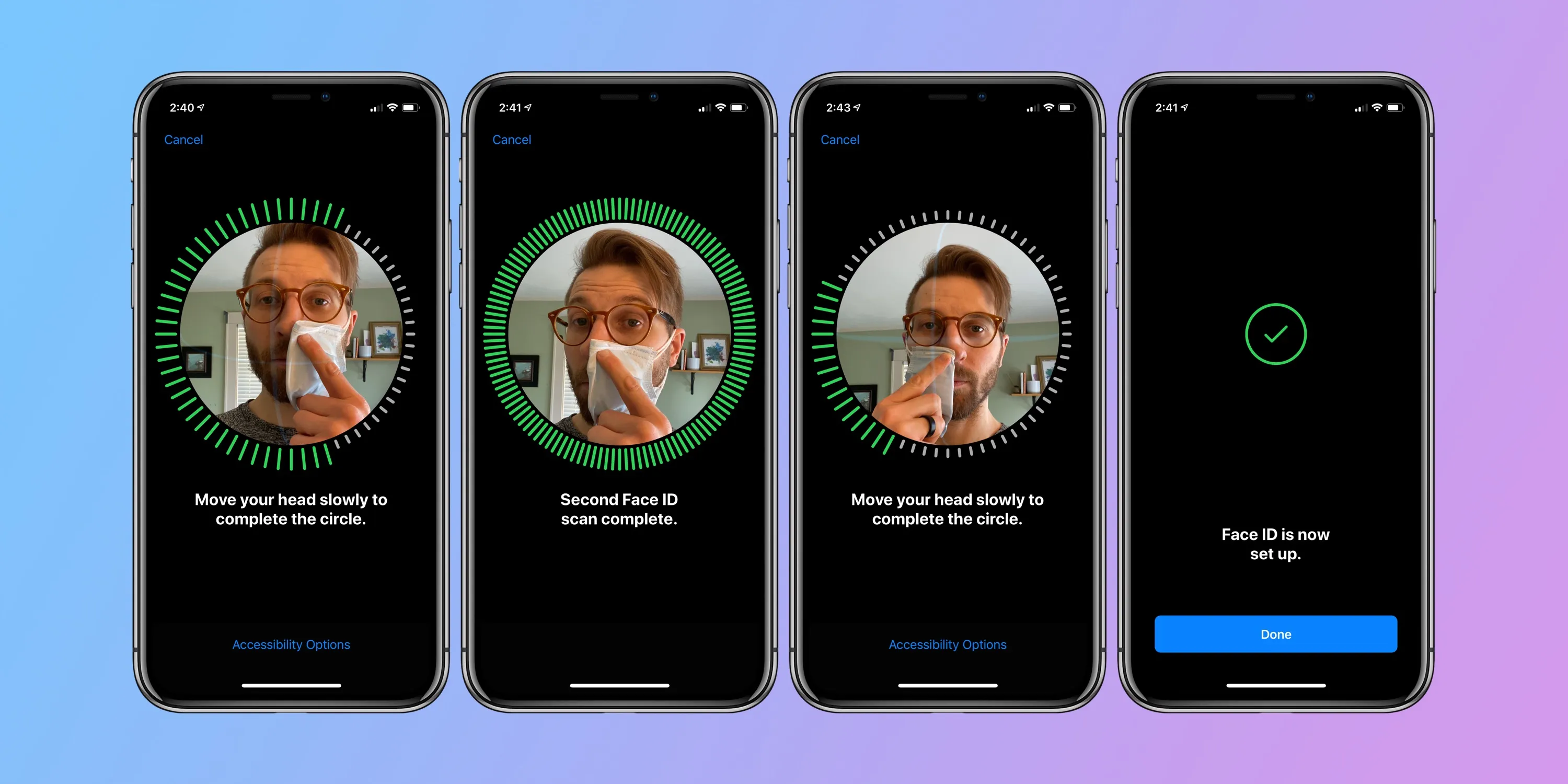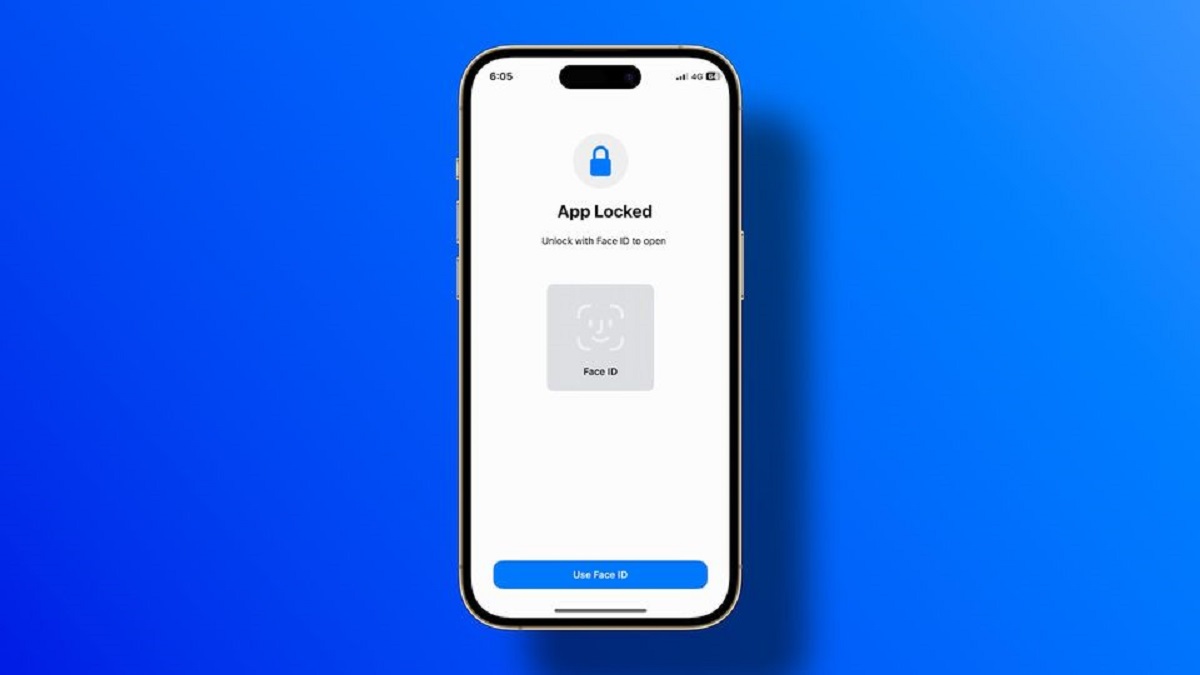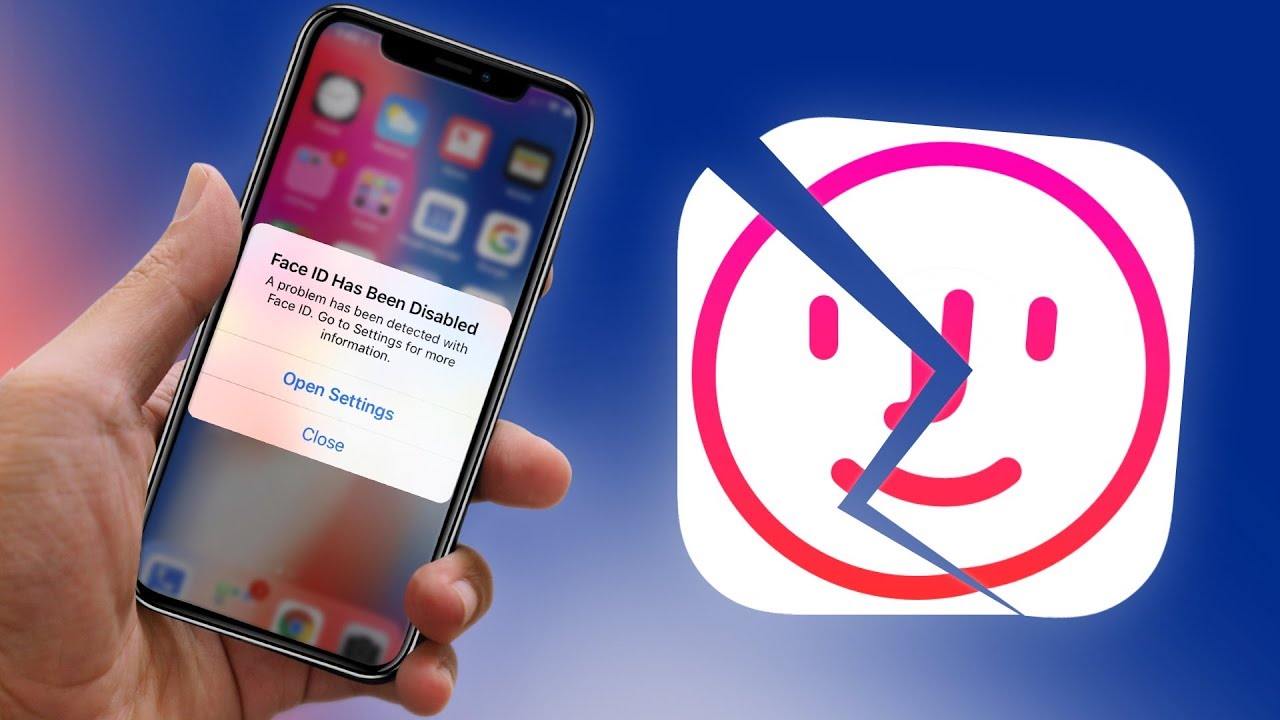Introduction
With the increasing reliance on smartphones for various activities, including banking, shopping, and social media, security has become a top priority. Traditional methods, like passcodes and fingerprint scanners, have made way for more advanced technologies. One such technology that has revolutionized smartphone security is Face ID.
Face ID is a facial recognition system introduced by Apple on their iPhone X and subsequent models. It uses sophisticated hardware and software, including the TrueDepth camera system and facial recognition algorithms, to securely authenticate users and provide access to their devices and sensitive data.
In this article, we will explore how Face ID works and delve into its technical aspects. We will uncover the mechanisms behind the TrueDepth camera system and the algorithms that make facial recognition possible. Additionally, we will discuss Face ID’s enrollment process, its performance in various lighting conditions, and the security measures it employs.
Understanding the inner workings of Face ID will not only enhance your knowledge but also shed light on the strides being made in the world of biometric authentication. So, let’s dive into the fascinating world of Face ID and discover how this technology is transforming the way we secure our smartphones.
What is Face ID?
Face ID is a facial recognition system developed by Apple that allows users to securely unlock their Apple devices, authorize transactions, and access secure applications. It was first introduced on the iPhone X and has since been incorporated into several iPhone and iPad models.
Unlike traditional methods of authentication, such as passcodes or fingerprint scanning, Face ID utilizes advanced 3D facial recognition technology to accurately identify and authenticate the user. This ensures a high level of security and convenience, as users no longer need to remember complex passcodes or physically interact with their device to unlock it.
The primary component of Face ID is the TrueDepth camera system, located at the top of the device. This system consists of several sensors, including an infrared flood illuminator, front-facing camera, dot projector, and proximity sensor, all of which work together to capture and analyze the user’s face.
By projecting a grid of infrared dots onto the user’s face, the dot projector generates a depth map and captures a 2D infrared image. These data points, along with information from the flood illuminator and front-facing camera, are then processed by advanced facial recognition algorithms to create a mathematical representation of the user’s face.
During the enrollment process, the user’s face is scanned from multiple angles to create a comprehensive facial map. This map is securely stored on the device and serves as a reference point for future authentication attempts.
When the user wants to unlock their device or authorize a transaction, the TrueDepth camera system scans their face and compares it with the enrolled facial map. If there is a match within a certain threshold, the device is unlocked, granting access to the user.
Face ID is designed to be highly secure and protect against spoofing attempts. It uses depth mapping and infrared technology to prevent unauthorized access through photographs or masks. Additionally, facial recognition is performed locally on the device, ensuring that the user’s data remains private and protected.
Overall, Face ID offers a seamless and secure authentication experience, making it a crucial component of Apple’s commitment to user privacy and security.
How does Face ID work?
Face ID utilizes a combination of hardware and software components to accurately recognize and authenticate the user’s face. Let’s take a closer look at the key elements involved in the functioning of Face ID:
The TrueDepth Camera System
The TrueDepth camera system is the heart of Face ID. It consists of several sensors, including an infrared flood illuminator, front-facing camera, dot projector, and proximity sensor. These components work together to capture precise details of the user’s face, regardless of the lighting conditions.
The dot projector emits a grid of infrared dots onto the user’s face, creating a 3D map of the contours and geometry. This depth map, combined with a 2D infrared image captured by the front-facing camera, provides detailed facial information for authentication.
Facial Recognition Algorithms
Once the TrueDepth camera system captures the user’s facial data, complex algorithms come into play. These algorithms analyze the depth map, infrared image, and other specific facial features to create a unique mathematical representation of the user’s face.
The facial recognition algorithms compare this representation with the enrolled facial map stored securely on the device during the enrollment process. By calculating the similarities and differences between the live scan and the stored data, Face ID determines whether the face belongs to the authorized user.
Enrollment Process
During the enrollment process, the user’s face is scanned from different angles to capture a comprehensive facial map. This map includes various facial landmarks, such as the distance between eyes, nose shape, and mouth placement, creating a personalized and highly accurate reference point for future authentication attempts.
Face ID adapts to changes in appearance, such as growing a beard, wearing glasses, or donning a hat. It uses machine learning algorithms to continuously update and refine the facial map, ensuring reliable recognition even with slight variations in the user’s appearance.
Face ID’s Adaptability to Different Lighting Conditions
Face ID is designed to work under various lighting conditions, thanks to the infrared technology used by the TrueDepth camera system. Unlike traditional facial recognition systems that rely on visible light, Face ID can accurately scan and recognize faces even in low-light situations or complete darkness.
The infrared flood illuminator emits invisible infrared light that allows the camera system to capture detailed facial information. This ensures reliable recognition regardless of the ambient lighting, making Face ID a versatile and practical security solution.
Overall, Face ID’s combination of advanced hardware, sophisticated algorithms, and adaptability make it a robust and reliable facial recognition system. It offers both convenience and security, providing users with a seamless authentication experience on their Apple devices.
The TrueDepth Camera System
The TrueDepth camera system is a state-of-the-art technology developed by Apple that plays a crucial role in the functioning of Face ID. It is located at the top of the device, discreetly integrated into the bezel, and consists of several advanced sensors working harmoniously to capture and analyze the user’s face in incredible detail.
One of the key components of the TrueDepth camera system is the infrared flood illuminator. This small module emits invisible infrared light that helps in capturing precise facial details. The flood illuminator ensures that the user’s face is evenly illuminated, even in low-light conditions or in complete darkness, allowing for accurate recognition regardless of the ambient lighting.
The dot projector is another significant element of the TrueDepth camera system. It projects a grid of over 30,000 invisible infrared dots onto the user’s face. By measuring the distortion of these dots as they hit the contours of the face, the dot projector generates a depth map, capturing the three-dimensional structure of the face. This depth map, in conjunction with the 2D infrared image, provides a highly detailed and unique representation of the user’s facial features.
The front-facing camera is responsible for capturing the 2D infrared image of the user’s face. It takes advantage of infrared technology to capture the texture and fine details of the skin, which are not affected by variations in lighting conditions. This infrared image complements the depth map generated by the dot projector, enabling a comprehensive analysis of the facial features during the authentication process.
Additionally, the TrueDepth camera system includes a proximity sensor that detects the presence of the user’s face and automatically wakes up the device when it is brought within close proximity. This ensures a seamless and instantaneous experience by reducing the need for manual interactions.
Combined together, the infrared flood illuminator, dot projector, front-facing camera, and proximity sensor of the TrueDepth camera system create a powerful setup for capturing precise facial data. This advanced hardware technology forms the foundation of Face ID, allowing it to accurately recognize and differentiate between different faces, even in challenging lighting conditions.
Apple’s dedication to incorporating cutting-edge technology into their devices is evident through the exceptional performance of the TrueDepth camera system. By harnessing the power of these advanced sensors, Apple has set new standards for facial recognition technology and has provided users with a secure and convenient way to unlock their devices and safeguard their sensitive information.
Facial Recognition Algorithms
Facial recognition algorithms are at the core of the Face ID technology, working in tandem with the hardware components of the TrueDepth camera system to accurately identify and authenticate the user’s face. These algorithms analyze the captured facial data and compare it with the enrolled facial map to determine a match. Let’s explore how these algorithms function:
First, the facial recognition algorithms process the depth map generated by the dot projector. This depth map consists of precise measurements of the user’s facial contours and geometry, allowing for an accurate representation of the three-dimensional structure of the face. By analyzing the unique pattern of the depth map, the algorithms can create a detailed facial model.
Next, the algorithms take the infrared image captured by the front-facing camera and extract additional information, such as skin texture and fine facial features. This infrared image provides an additional layer of data that contributes to the overall facial representation.
By combining the depth map and the infrared image, the facial recognition algorithms create a mathematical representation of the user’s face. This representation encapsulates various aspects, including facial landmarks, proportions, and subtle details, forming a unique identifier for the individual.
During the authentication process, the facial recognition algorithms compare the live facial scan with the enrolled facial map stored securely on the device. This comparison is performed by calculating the similarities and differences between the two representations using complex mathematical algorithms.
The algorithms take into account factors such as pose, expression, and changes in appearance to ensure accurate authentication. This adaptability allows Face ID to recognize the user, even if they are wearing glasses, a hat, or have grown or shaved facial hair. The algorithms use machine learning techniques to continually refine their recognition capabilities, adapting to different users and maintaining a high level of accuracy.
It’s important to note that facial recognition with Face ID is performed locally on the device, safeguarding user privacy. The facial data is not transmitted to external servers or stored in the cloud, ensuring that the personal information remains secure and inaccessible to unauthorized parties.
The advanced facial recognition algorithms used in Face ID are the result of years of research and development. By combining hardware and software, Apple has created a highly secure and efficient facial recognition system that provides a seamless user experience while ensuring the utmost privacy and security.
Enrollment Process
The enrollment process is a crucial step in setting up Face ID on an Apple device. During this process, the TrueDepth camera system captures and analyzes the user’s face from multiple angles to create a comprehensive and highly accurate facial map. Let’s delve into the details of the enrollment process:
When setting up Face ID for the first time, the user is guided through a series of steps to register their face. This involves positioning their face within the frame displayed on the screen and following the prompts provided by the device.
During the enrollment process, the TrueDepth camera system utilizes the dot projector to project a grid of infrared dots onto the user’s face. By analyzing the distortion of these dots, the camera system generates a depth map, capturing the three-dimensional contours and geometry of the face.
The front-facing camera simultaneously captures a 2D infrared image of the user’s face. This image provides additional texture and fine details, enhancing the accuracy of the facial map.
As the user’s face is scanned from various angles, the facial recognition algorithms continuously analyze and build a mathematical representation of the facial features. This representation includes facial landmarks, such as the distance between the eyes, the shape of the nose, and the placement of the mouth.
The enrollment process requires the user to follow on-screen instructions to complete the face scan successfully. This includes slowly turning their head to allow the camera to capture different angles of the face. This multi-angle approach ensures that the facial map is comprehensive and adaptable to recognize the user from various perspectives.
It is worth noting that during the enrollment process, Face ID adapts to changes in the user’s appearance. This means that if the user grows a beard, wears glasses, or makes other subtle changes to their appearance, Face ID still recognizes and authenticates their identity. The facial recognition algorithms leverage machine learning techniques to continuously update and refine the facial map, ensuring reliable functionality even with slight variations in the user’s appearance.
Once the enrollment process is completed, the device securely stores the created facial map on the device. This information is encrypted and inaccessible to external parties, protecting the user’s privacy and ensuring that the facial map remains secure.
The enrollment process is quick, seamless, and user-friendly, allowing users to set up Face ID with ease. By capturing and storing a comprehensive facial map, Face ID ensures accurate and reliable authentication, providing users with quick and secure access to their Apple devices.
How Face ID works in different lighting conditions
One of the impressive aspects of Face ID is its ability to work reliably in different lighting conditions. Whether in bright sunlight or dimly lit environments, Face ID is designed to adjust and provide accurate facial recognition. Let’s explore how Face ID performs in various lighting conditions:
Bright Lighting: Face ID excels in bright and natural lighting conditions. The TrueDepth camera system, equipped with the infrared flood illuminator, can accurately capture and analyze facial details even in direct sunlight. The flood illuminator ensures that the user’s face is evenly illuminated, compensating for harsh lighting and shadows, and ensuring reliable facial recognition.
Low-light Conditions: Face ID is also optimized to work in low-light situations. The infrared technology used by the TrueDepth camera system allows for effective recognition, even in dimly lit environments. The infrared flood illuminator emits invisible infrared light that helps illuminate the user’s face, capturing the necessary details for accurate facial recognition. This ensures that Face ID remains reliable even when the lighting conditions are not ideal.
Complete Darkness: Unlike traditional facial recognition systems that rely solely on visible light, Face ID can function in complete darkness. The infrared technology used by the TrueDepth camera system pierces through the darkness, capturing the user’s face with the help of the infrared flood illuminator. The dot projector and front-facing camera accurately measure facial contours, allowing Face ID to deliver reliable authentication in the absence of any visible light.
Varied Lighting Environments: Face ID is designed to adapt to various lighting conditions seamlessly. Thanks to the TrueDepth camera system’s sophisticated hardware and advanced algorithms, it can handle rapid changes in lighting, such as moving from a brightly lit room to a dimly lit area. The system quickly adjusts exposure levels and compensates for the changing lighting conditions to ensure consistent and reliable facial recognition.
Overall, Face ID’s remarkable performance in various lighting conditions is a testament to the advanced technology powering it. Whether in bright sunlight, low-light environments, or complete darkness, the TrueDepth camera system, combined with facial recognition algorithms, enables Face ID to deliver secure and accurate facial authentication, ensuring convenient access to Apple devices in any lighting situation.
Face ID’s security measures
Face ID incorporates several robust security measures to ensure the protection and privacy of the user’s facial data. Let’s explore some of the key security features of Face ID:
Secure Enclave and Local Processing
Face ID’s facial recognition is performed locally on the device using the device’s Secure Enclave. The facial data collected by the TrueDepth camera system is securely stored within the device and is not transmitted to external servers or Apple’s cloud services. This ensures that the user’s facial data remains private and inaccessible to unauthorized parties.
Detailed Facial Mapping
During the enrollment process, Face ID captures a comprehensive facial map that includes detailed facial landmarks, contour information, and other unique facial features. This detailed mapping enhances the accuracy of facial recognition, making it highly secure and resistant to spoofing attempts with photographs or masks.
Infrared Technology and Liveness Detection
Face ID utilizes infrared technology to capture and analyze the user’s face, including aspects that are not visible to the naked eye. The TrueDepth camera system can distinguish between a real face and a replica or mask, thanks to infrared imaging and liveness detection capabilities. This prevents unauthorized access through fraudulent means.
Adaptive Learning and Continuous Updating
Face ID incorporates adaptive learning algorithms that continuously update and refine the facial recognition capabilities. It adapts to changes in the user’s appearance, such as growing a beard, wearing glasses, or changing hairstyles. Face ID leverages machine learning to recognize and authenticate the user reliably, even with subtle variations in their appearance.
Attention-aware Feature
Face ID includes an attention-aware feature that enhances security. It requires the user to be actively looking at the device for facial recognition to occur. This means that simply presenting a registered face is not sufficient for access; the user’s attention is also required, adding an extra layer of security.
Data Protection and Encryption
The facial data collected by Face ID is encrypted and securely stored on the device. This encryption ensures that even if the device is compromised, the facial data cannot be easily accessed or deciphered by unauthorized individuals. Additionally, Face ID does not store or transmit the user’s facial data outside of the device, further enhancing the security of their personal information.
Apple has put significant effort into developing and implementing robust security measures with Face ID. By combining advanced hardware, complex facial recognition algorithms, and local processing, Face ID ensures a secure and reliable authentication experience, protecting the user’s privacy and providing peace of mind.
Face ID’s usability
Face ID not only offers enhanced security but also provides a seamless and user-friendly authentication experience. Its usability is a key factor in its widespread adoption. Let’s explore some of the key aspects that contribute to Face ID’s usability:
Convenience and Speed
Face ID offers a convenient way to unlock Apple devices and authorize various actions. With a simple glance, users can effortlessly unlock their devices or authenticate purchases and app installations. The speed at which Face ID operates ensures a quick and efficient user experience, eliminating the need to enter passcodes or use fingerprint scanners.
Hands-free Interaction
Unlike traditional authentication methods, Face ID allows for hands-free interaction with Apple devices. Users can simply look at their device to unlock it, eliminating the need to physically interact with buttons or scanners. This hands-free interaction makes Face ID especially useful when users have their hands occupied, such as when carrying items or while wearing gloves.
Accessibility Features
Face ID includes accessibility features that cater to a wide range of users. It accommodates individuals with visual impairments through the use of VoiceOver, providing audible cues and feedback during the authentication process. Face ID also supports attention-aware features, ensuring that users with certain disabilities, such as amblyopia, can still benefit from secure facial recognition.
Adaptability to Different Conditions
Face ID is designed to work in various environmental conditions. It can recognize and authenticate users in different lighting conditions, including bright sunlight, low-light environments, and even complete darkness. Its adaptability ensures consistent and reliable performance regardless of the lighting conditions, enhancing the usability of Face ID in diverse settings.
Seamless Integration with Applications
Face ID seamlessly integrates with various applications, allowing users to authenticate actions and access sensitive information within apps. This integration eliminates the need for separate passwords or authentication methods within each app, streamlining the user experience. Face ID makes transactions, in-app purchases, and other secure actions more convenient and secure.
Continuous Improvement and User Feedback
Apple consistently strives to improve Face ID’s usability based on user feedback and advances in technology. Each software update brings refinements and enhancements, making Face ID even more user-friendly and efficient. This commitment to continuous improvement ensures that users can enjoy a seamless and hassle-free authentication experience.
Collectively, these usability features position Face ID as a user-friendly and highly convenient security solution. By combining advanced facial recognition technology with the seamless integration of applications and accessibility features, Apple has created a powerful authentication method that enhances the overall user experience on their devices.
Frequently Asked Questions
Here are some common questions and answers about Face ID:
1. Is Face ID secure?
Yes, Face ID is secure. It uses advanced facial recognition algorithms, secure enclave, and local processing to ensure the privacy and protection of the user’s facial data. The facial information is stored securely on the device and is not transmitted to external servers, providing a high level of security.
2. Can someone unlock my device with a photo of me?
No, Face ID is designed to prevent unauthorized access through spoofing attempts with photographs. The TrueDepth camera system includes infrared technology and depth mapping capabilities, making it difficult for someone to unlock your device with a simple photo.
3. Can Face ID recognize me if I change my appearance?
Yes, Face ID can adapt to changes in your appearance. It uses machine learning algorithms to continuously update and refine the facial map, allowing it to recognize you even if you grow a beard, wear glasses, or make other subtle changes to your appearance.
4. Can I use Face ID in the dark?
Yes, Face ID works in low-light conditions and even in complete darkness. The infrared flood illuminator and dot projector of the TrueDepth camera system enable Face ID to accurately capture and analyze your facial features, regardless of the lighting conditions.
5. Can Face ID be used by multiple users?
Face ID is designed to be used by a single user. During the enrollment process, it captures a comprehensive facial map specific to that user. However, multiple users can register their faces on the same device if they each have their own user account.
6. Can I disable Face ID and use a passcode instead?
Yes, you have the option to disable Face ID and use a passcode for device authentication. You can customize your device’s settings to choose the preferred method of unlocking and access control.
7. Can Face ID be used with third-party apps?
Yes, Face ID can be integrated into third-party apps. Developers can incorporate Face ID’s authentication capabilities into their applications, offering a seamless and secure user experience.
8. How accurate is Face ID?
Face ID has a high level of accuracy. The facial recognition algorithms used are designed to provide reliable authentication and minimize false positives or false negatives.
9. What happens if someone tries to unlock my device with their face?
If someone tries to unlock your device with their face, Face ID would not authenticate their identity and deny access. Face ID requires the user’s explicit attention and active participation for successful authentication, ensuring unauthorized individuals are unable to access your device.
10. Is Face ID available on all Apple devices?
Face ID was first introduced on the iPhone X and has since been incorporated into various iPhone and iPad models. However, not all Apple devices are equipped with Face ID. You can check Apple’s website or consult the device specifications to determine if your device supports Face ID.
These FAQs address some of the common queries related to Face ID. If you have specific concerns or additional questions, it is advisable to refer to Apple’s support documentation or reach out to their customer support for personalized assistance.
Conclusion
Face ID has emerged as a pioneering facial recognition technology that has revolutionized the way we secure our Apple devices. Through the integration of advanced hardware components, such as the TrueDepth camera system, and sophisticated facial recognition algorithms, Face ID delivers a seamless, secure, and user-friendly authentication experience.
By capturing and analyzing the user’s face with incredible precision, Face ID provides a high level of security that is difficult to breach. The enrollment process creates a comprehensive facial map specific to the individual, allowing for accurate recognition even with slight variations in appearance. The infrared technology and liveness detection features further enhance its security measures, preventing unauthorized access through photographs or masks.
Face ID’s usability is another compelling aspect. Its convenience, speed, and hands-free interaction offer a seamless user experience, allowing users to effortlessly unlock, authenticate, and access their Apple devices. Face ID’s adaptability to different lighting conditions showcases its versatility, enabling reliable recognition in bright sunlight, low-light environments, and even complete darkness.
Apple’s dedicated approach to user privacy is evident in the local processing and encryption of facial data within the device’s Secure Enclave. Face ID ensures that the user’s personal information remains secure and private, with no transmission to external servers or cloud storage.
With its continuous improvement, accessibility features, and integration with third-party apps, Face ID has become an essential and trusted security feature. It sets a new standard for facial recognition technology and solidifies Apple’s commitment to user privacy, security, and innovative user experiences.
As technology advances, it is impressive to see Face ID’s functionality evolving, providing a safe and seamless way for users to unlock their devices, authorize transactions, and protect their sensitive information. With its combination of advanced hardware, advanced algorithms, and user-friendly design, Face ID has undoubtedly transformed the landscape of mobile device security.







